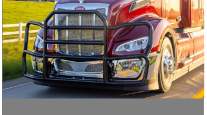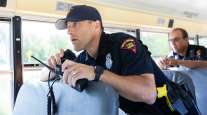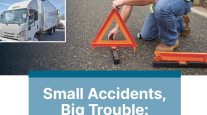Opinion: Follow the Right Protocol in Accident Reporting
When developing accident-response training for drivers, fleets often focus on the wrong thing. They typically start with a list of do’s and don’ts without the proper context. Fleets, and by extension their drivers, must know the importance of following the right protocol. When it comes to accident reporting, it’s crucial.
As I’ve learned from transportation lawyers at industry conferences, the kind of training fleets offer matters. If you’re involved in an accident, the trial lawyer would examine all of your procedures, not just the accident, and would poke holes in your defense. Juries tend to look on companies more favorably when it can demonstrate an active interest in developing and training drivers.

Murrell
Whether drivers are rookies or longtime seasoned pros with a million or more accident-free miles, accidents can happen to any of them, at any time. No matter who’s at fault, drivers should be prepared to follow post-accident procedures and regulations at an accident scene, help others who are injured, gather as much information as possible to protect themselves and their carriers, and do their best to keep themselves and others out of danger. Accident-response training works when drivers can better comprehend its context and then practice it until it’s almost second nature. It shouldn’t be a one-time course taken during their new employee orientation. Because accidents are often infrequent, high-stress situations, response training must be a continual process.
Good accident training minimizes a fleet’s risk by giving drivers the opportunity to:
• Discuss what to expect at the accident scene and afterwards.
• Learn the major steps to complete. The steps should be simplified so they are easier for drivers to remember. As one example, there are the “three C’s” of first aid: Check. Call. Care.
• Learn how to stay relatively calm, how to behave and how to respond at the accident scene to those who are not calm.
• Examine what to do and what to say and to whom and what not to do and say at the scene and afterwards.
• Discuss post-traumatic stress disorder, which can occur after an accident, particularly when it has involved serious injuries or fatalities.
• Receive periodic refresher training, including regular practice exercises and mock accident scenes.
While training to drive home the steps needed in accident reporting is vital, training to avoid accidents in the first place is also needed.
Statistically, distracted driving is one of the leading causes of accidents. That’s why much of the discussion focused on distracted driving policies and discipline, particularly which offenses constituted a “strike” in a three-strike policy and which were grounds for immediate termination.
At an industry conference I attended earlier this year, I learned many fleets with the best safety records don’t issue concrete rules regarding the use of handheld devices while driving. Instead, they employ a process, which provides, among other things, additional training and coaching for drivers who make such mistakes.
After listening to conference speakers and talking with fleet managers, I concluded that whether the issue at hand is training drivers to avoid distracted driving or to respond to an accident, fleets must focus more on the process and less on the rules.
Fleets with a multitude of black-and-white policies about what drivers MUST and MUST NOT do can end up in far worse shape than their counterparts simply because the world isn’t black and white. It’s a million different shades of gray. There must be some leeway for those many grey situations in which drivers must make judgment calls.
Fleets with the best safety records have a process for evaluating each situation, creating a plan of action and then executing that plan. Their process calls for taking different steps for each situation and driver, which is more effective as a result.
Whether teaching drivers how to avoid being distracted while driving or how to properly respond in an accident, fleets really can’t reduce their litigation risks if all they’ve done is create a box for drivers to check or a test for them to pass at the end of the training session. If drivers promptly forget everything they’ve learned the next time their handheld device rings or a text appears on their screen or when accidents happen, then how effective is that fleet’s driver training program?
Establishing policies and checklists simply isn’t adequate for developing good driver training. Plaintiff lawyers are just too good at finding potentially damaging details by asking such questions as how often are those policies reviewed and updated. They’re also very adept at finding situations in which policies weren’t followed, then using those incidents to “prove” a history of negligence.
By focusing instead on a great development process for driver training, fleets are far less likely to be hauled into a court of law or the potentially far more damaging court of public opinion.
Mark Murrell is co-founder of CarriersEdge, a provider of online driver training for the trucking industry, and co-creator of Best Fleets to Drive For, an annual evaluation of the best workplaces in the North American trucking industry produced in partnership with Truckload Carriers Association. He can be reached at www.carriersedge.com




